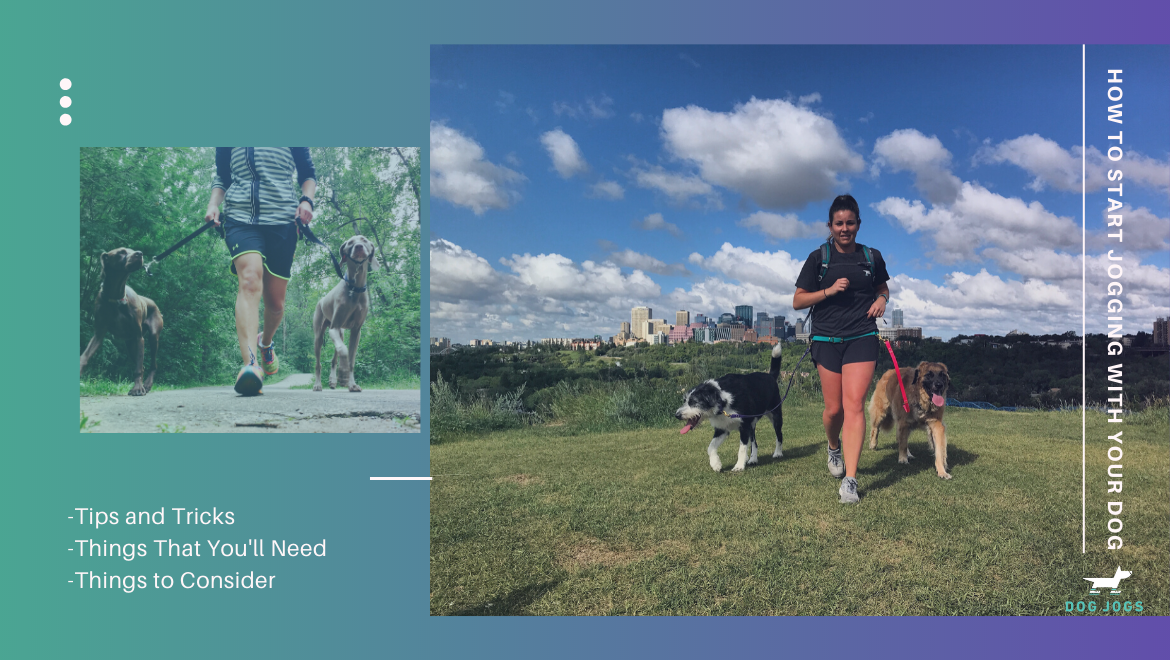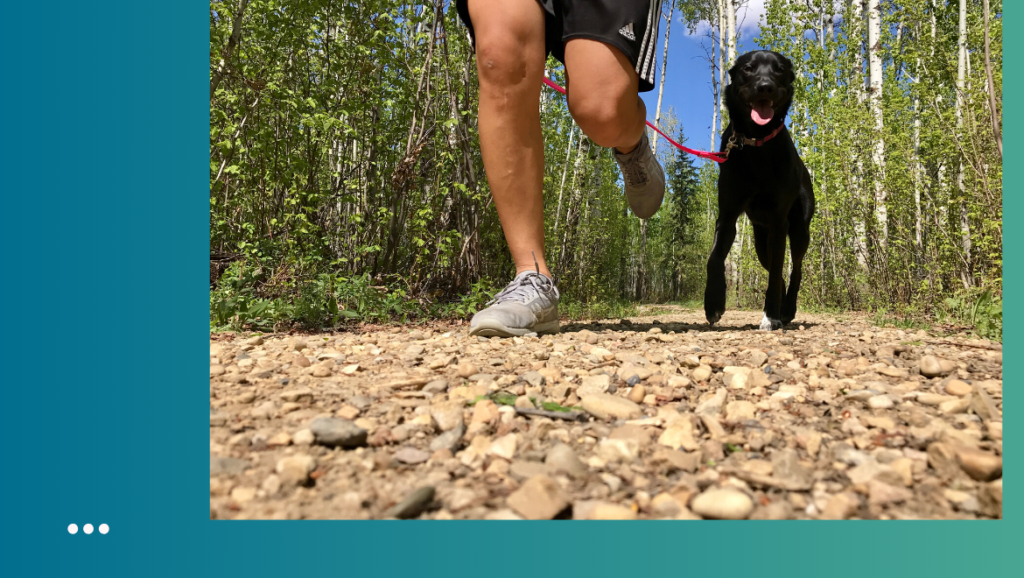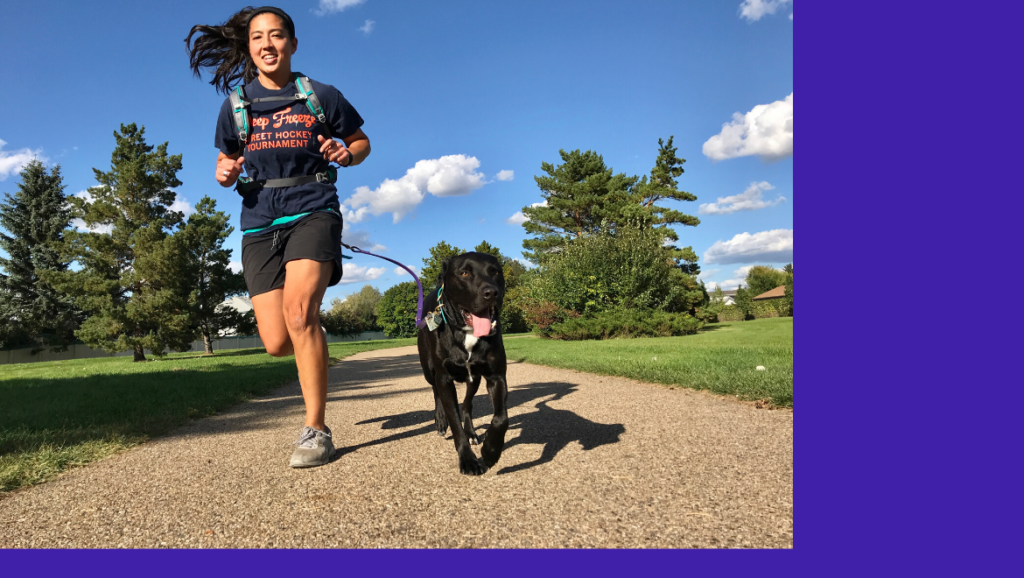Want To Start Running With Your Dog?

Dogs make some of the best running partners. At Dog Jogs, we’ve been running with dogs for a long time. Many of us run our own dogs, and maybe we’ve even jogged your dog! We’ve handled pups of all ages, all sizes, and all energy levels. If there is something we know, it’s how to run with a dog.
With all the information we’ve gathered through our own experience, talking to dog trainers, and our entire team of dog joggers, we’ve put together some tips for anyone wanting to start running with their dog. Whether you are a regular jogger and want your pooch to start joining you, or maybe running is something new to you too, running with your dog can be very rewarding for both you and your dog.
Before you start to jog your dog, there are a few things to consider
- It’s important not to start running with your dog if they are too young. Generally, you should wait until your dog is at least 12 months old, but it also depends on many variables like breed, size, health, etc. Running with a puppy that is too young, can damage their joints/bones that haven’t fully developed yet. We recommend checking with your veterinarian before starting a running regime to make sure that it’s safe for your pup.
- Don’t forget to warm up and cool down! Much like humans, this protects you both from injury.
- Try to run when it’s not too hot out. Dogs tend to overheat much faster than humans. Running in the mornings or evenings prevent the chance of heat exhaustion, and usually is when dogs tend to be more active.

Start Slowly and Use Cues
We must all learn to walk before we learn to run. First, focus on the walk and reinforce that having a loose leash is what you want. You can do this by rewarding with treats every time your dog gives you a loose leash or using a little toy if your dog is not food motivated. The goal is to have your dog check in with you and keep their attention on YOU. Try a verbal cue – something simple, even a “click” of your tongue to get your dog’s eyes on you. Once your dog has a consistent loose leash while walking, pick up the pace to a slow jog, using the same cues and rewarding in the same way.
Use treats
Reward all the good stuff using small high-value treats that aren’t filled with too much junk. Consider using their kibble if they find it motivating. Find the reward that works for your dog. Once you get into the groove you’ll use less treats, but keep them on hand just in case.
Stay Present & Be Aware
Learn your dog’s triggers and thresholds. Is there a dog in the neighbourhood that doesn’t mesh with your furry-friend? Does your dog want to chase all the rabbits (all the time)? Staying present and aware of your surroundings is for the safety of you and your dog, and will ensure a successful experience. Try to see those rabbits even before your dog and head in a different direction or reward them for keeping their attention on you. Check-in with what your dog is communicating too, are they falling behind you, are they panting like crazy? Your dog can’t just ask for a water break in words, so look at that body language!
Change It Up, But Be Consistent
Don’t have a set route when you’re first starting out. Turn corners, cross streets and don’t be afraid to just turn right around. This is a great tip when you lose that loose leash, just stop and turn around. It will get your dog’s attention back on you if you suddenly change direction. If you’d like your dog to become a regular running partner then be consistent. Get out every day if you can, or as often as you can. Running with your dog once a week, it may feel like you aren’t making any real progress, so get out with your pooch often to reinforce those skills.

Wear Everything You Need
If you ask our team, everyone has their favourite piece of running gear. Although, the hands-free leash is the one thing that everyone on the team considers a ‘must-have’. A waist leash can be handy for both runs and walks with your dog. Other things that are nice to have: a fanny pack or deep pockets for treats and poop-bags, a little backpack for water, and a collapsible/travel water dish for your dog (especially in the heat of summer with no puddles around). Dogs need water breaks too!
Track Your Progress
At Dog Jogs, we use an app called Endomondo to track our GPS, time, and distance. It provides a little map at the end and shows how many kilometers were covered, how long we were out, and the route we took. There are countless trackers available for free. It’s fun to track your progress, experience different routes, set yourself some realistic goals, and see what happens!
Be Patient
Some days will be better than others. Some days you may be so connected with your dog you may not even need a leash. While some days, you may feel like the first day running together. Don’t give up, and be kind to yourself and your dog. Running with your dog can be a time to bond with your furry friend! If you are frustrated, yelling, or just plain angry, it’s not going to be pleasant for anyone. It should be a time to connect and enjoy each other’s company while getting in some exercise, of course.
Once you feel like you and your pup have the basics down, slowly increase your jogging sessions to build endurance. Keep in mind that it’s important to pace yourself where it’s a comfortable pace for you and your dog. And again, be aware of their body language and behaviours while running. When they show you behaviours like not wanting to run when it’s too hot out, or if they’re lifting their paws when it’s too cold, this is usually their way of communicating that something is wrong. And lastly, have fun!!
Dog Jogs knows dogs! Feel free to contact us to discuss how we can help fill in the gaps with your dog’s exercise needs. Especially if you have been running with your pup consistently, we can keep them on track when you’re back at work! We offer 30-minute Pawty-breaks, 60 minute-Dog Walks, or 60 minute-Dog Jogs for pups of every activity level.